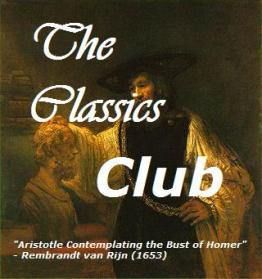Back in March I won the opportunity to read John Steinbeck’s Cannery Row for The Classics Spin #9. And I mistakenly thought the completion date was May 15. In fact, it was May 5. Not that it really matters, since I’m a bit late either way. But I did finally finish reading the book on the plane flight to Europe.
Steinbeck, John. Cannery Row
Original publication date: 1945
Rpt. New York: Penguin, 2002
ISBN 978–1–101–65979–3
Cannery Row in Monterey in California is a poem, a stink, a grating noise, a quality of light, a tone, a habit, a nostalgia, a dream. Cannery Row is the gathered and scattered, tin and iron and rust and splintered wood, chopped pavement and weedy lots and junk heaps, sardine canneries of corrugated iron, honky tonks, restaurants and whore houses, and little crowded groceries, and laboratories and flophouses. Its inhabitants are, as the man once said, “whores, pimps, gamblers, and sons of bitches,” by which he meant Everybody. Had the man looked through another peephole he might have said, “Saints and angels and martyrs and holy men,” and he would have meant the same thing.
This opening paragraph introduces readers to Cannery Row, where, when the “cannery whistles scream … men and women scramble into their clothes and come running down to the Row to go to work.” But at day’s end, after these workers “straggle out and droop their ways up the hill into the town … Cannery Row becomes itself again—quiet and magical. Its normal life returns.”
The book’s narrator asks, “How can the poem and the stink and the grating noise—the quality of light, the tone, the habit and the dream—be set down alive?” He decides that the way to write this book is “to open the page and to let the stories crawl in by themselves.”
And so, in the manner of Sherwood Anderson’s Winesburg, Ohio, Cannery Row tells the story of this place through the intertwining stories of its inhabitants. Set during the Great Depression, the book portrays a time when work was hard and life was even harder.
The main characters include Doc, a marine biologist based on Steinbeck’s friend Ed Ricketts, to whom the book is dedicated; Lee Chong, a local Chinese grocer; Mack, the leader of a group of unemployed men; and Dora, owner of the local brothel. The book acknowledges the characters’ many faults—drunkenness, malingering, craftiness—while at the same time portraying their good qualities—kindness, charity, friendship. After all, “whores, pimps, gamblers, and sons of bitches” are the same as “saints and angels and martyrs and holy men.”
© 2015 by Mary Daniels Brown

